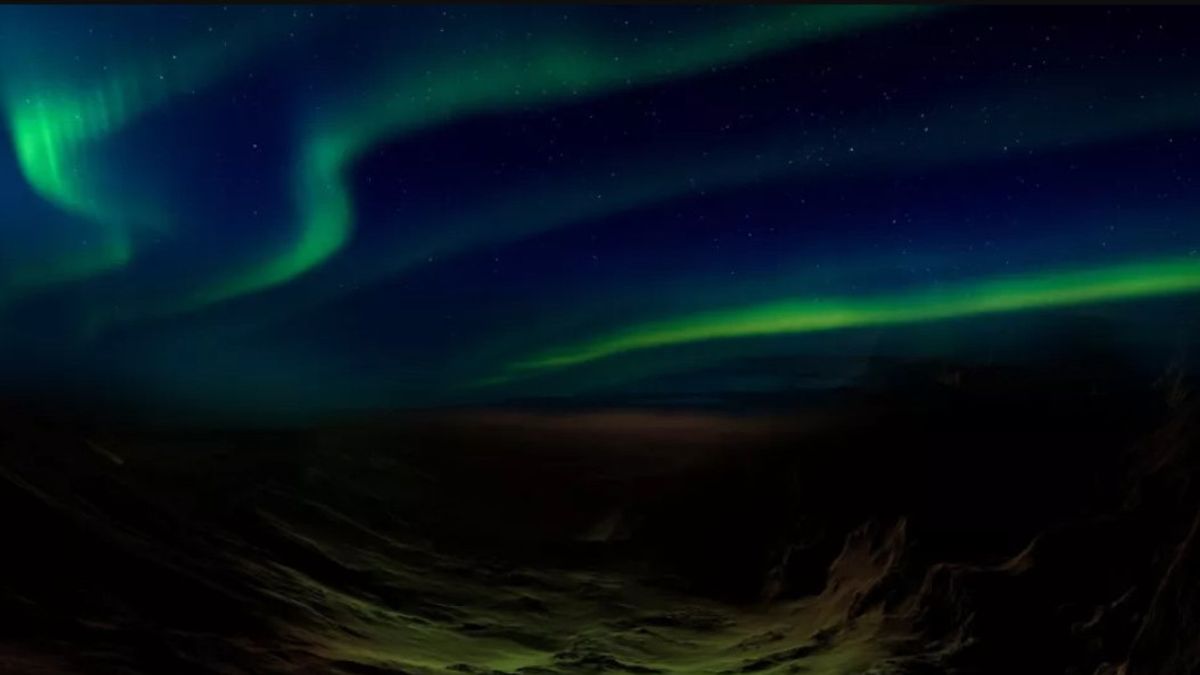JAKARTA - Planet Mars surprisingly has auroras, this amazing celestial phenomenon has been captured by the United Arab Emirates (UAE) spacecraft.
The appearance of aurora on Mars is actually against the understanding of scientists, where they claim the Red Planet does not have a magnetic field which of course aurora is not at all expected to appear.
Hope, the UAE space probe arrived on Mars in February 2021 on a mission to study the planet.
Hope was very lucky that time, because coincidentally there was a solar storm that scientists believe produces aurora. Called the meandering discrete aurora, it consists of worm-like tendrils of ultraviolet light in the upper atmosphere and weave around Mars.
"The meandering discrete aurora is a surprising discovery that in many ways leaves us scratching our heads and returning to the drawing board," University of California, Berkeley planetary scientist Rob Lillis said in a statement.
"We have ideas, but no solid explanation for why we are observing intense auroras in this shape and on a planetary scale," he added.
On Earth itself, auroras occur when charged particles from the Sun interact with the global magnetic field and are channeled to one of the two poles, producing the Northern and Southern Lights. But Earth's magnetic field is generated by Earth's central dynamo, a solid metal core rotating within a molten metal outer core.
In 2021, NASA's Insight mission showed that Mars does not have a solid central core, and its large, liquid core is made mostly of lighter non-metallic elements such as oxygen or hydrogen.
No central dynamo means no global magnetic field on Mars, and scientists think the lack of such a field is the reason why Mars has such a thin atmosphere, slowly stripped of charged particles flowing out of the Sun, the solar wind over millions of years. .
For information, the European Mars Express mission nevertheless observed aurora on Mars for the first time in 2004. It turns out that parts of the Martian crust still function as strong magnets even after the planet's global magnetic field died out centuries ago, generating local magnetic fields that capture charged particles and produce auroral light.
The distinguishing feature of these fields is why they appear in different locations on Mars than at the poles and on Earth, and why the glowing phenomenon is called discrete aurora.
But Lillis said such separate auroras could stretch as far as they did in Hope's observations, suggesting something more is afoot.
Looking deeper may require data from Hope and other missions, such as NASA's Mars atmosphere and volatile evolution, or the Maven orbiter.
"We now have the opportunity to re-examine previous Mars observations by missions like MAVEN and Mars Express for signatures that could refine Hope's new observations and possibly help us try and uncover what's going on here," Lillis said.
The English, Chinese, Japanese, Arabic, and French versions are automatically generated by the AI. So there may still be inaccuracies in translating, please always see Indonesian as our main language. (system supported by DigitalSiber.id)













